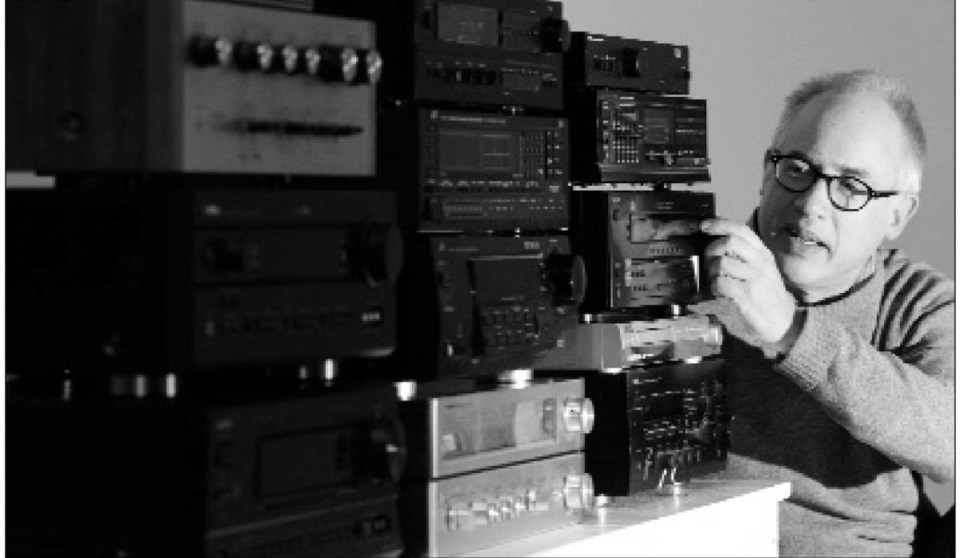Cage 100
When/where: Various concerts and related events, Nov. 8 through Jan. 12.
Tickets: Free to $20.
Details: victoriasymphony.ca, finearts.uvic.ca/music/events, aggv.ca, openspace.ca, and timescolonist.com.
This year marks the centenary of the birth of John Cage, the maverick American musician whose visionary ideas and sonic experiments made him one of the 20th century's most controversial artists, revered as a liberator and reviled as a desecrator. His multifarious activities as composer, performer, visual artist, writer, thinker, impresario and guru exercised an enormous influence that can still be felt today, 20 years after his death.
One of the most noteworthy Canadian celebrations of the centenary is taking place here: Cage 100, comprising five concerts and allied events, curated by composer Christopher Butterfield and sponsored by the Victoria Symphony, the University of Victoria, the Art Gallery of Greater Victoria and Open Space. The festival might also be called Cage 101, for it amounts to a primer on his work, thought and impact.
It is already underway: Last Thursday, the Art Gallery launched Devoted Play, an exhibit of Cage-related archival materials and artworks (it runs through Jan. 6), while Open Space sponsored the Canadian premi猫re of the sound installation Essay, in which 36 recordings of Cage reading Thoreau play through 36 speakers (it runs through Jan. 12).
Cage 100 has been supported by institutions including the John Cage Trust, in New York, and by colleagues of Cage's, two of whom will make public appearances. Monday evening at Open Space, Montreal-based composer Andrew Culver, Cage's musical assistant during his last decade, will discuss Cage as an "apolitical anarchist," and on Nov. 22, at the art gallery, American composer Gordon Mumma, who now lives here, will give a talk and present his short documentary TIME'SPACE. In the 1960s and '70s, Mumma worked with Cage and the dancer-choreographer Merce Cunningham, who was Cage's domestic and creative partner for half a century; his film shows the two artists at work and in conversation, and his talk will focus on Cunningham's collaborations with musicians and visual artists.
The Cage works to be performed this weekend span more than 40 years, including several from the latter half of his career, when, under the influence of Zen Buddhism, he used "chance" processes - flipping coins, consulting the I Ching - to determine the content of his music, and explored ways of incorporating silence and noise into music.
Friday at 5 p.m. in Phillip T. Young Recital Hall, the university's Sonic Lab will offer Musicir-cus, which is essentially an invitation for musicians to gather and simultaneously perform whatever they wish, while at 8 p.m. it will offer three chance-based, partially indeterminate works: Etcetera, Ryoanji and Concert for Piano and Orchestra. Saturday evening in Alix Goolden Hall, the Victoria Symphony's Cage 100 program will include his most notorious work, 4'33" (pronounced "four thirty-three"), in which the performers produce no intentional sounds at all - the "music" consists of the ambient noises heard during the performance. (At last, a piece during which we can cough, unwrap candies and make phone calls with impunity.)
The earlier Cage, though already eccentric, is easier going for most audiences, and the Cage 100 concerts, not surprisingly, will emphasize works composed between 1939 and 1951, including two masterpieces influenced by Indian philosophy: The Seasons, which the Victoria Symphony will perform, and the String Quartet in Four Parts, which the Emily Carr String Quartet will perform Sunday evening at the art gallery. Gentle and spare, the quartet seems to reflect the purpose of music as an Indian friend of Cage's described it: "to quiet and sobre the mind, thus making it susceptible to divine influences."
The Victoria Symphony's concert will also include Cage's concerto for prepared piano - that is, a piano among whose strings foreign objects have been inserted in order to create a sort of one-man percussion orchestra redolent of Asian and Caribbean instruments (the Indonesian gamelan, for instance). The solo part will be played by Bulgarian-born pianist Tzenka Dianova, who lives here and is an internationally recognized authority on Cage's large body of prepared piano music (she has recorded some of it, and written a book about it).
And Friday at 12: 30 p.m., in Philip T. Young Recital Hall, the university's percussion ensemble will showcase two of the younger Cage's many fascinating experiments in rhythm and timbre: First Construction (in Metal), whose unconventional battery includes anvils and car brake drums, and Third Construction.
Incidentally, some Cage 100 concerts will also feature works by other composers, most notably Charles Ives, but also several Canadians, including the Toronto percussionist Rick Sacks, whose Cage-influenced work Water Music will be premi猫red by the Victoria Symphony, which commissioned it.



